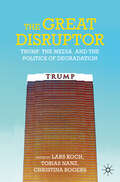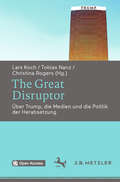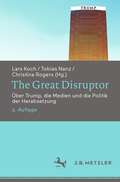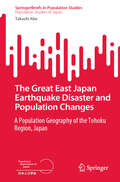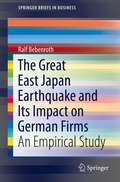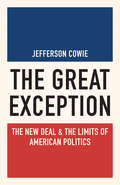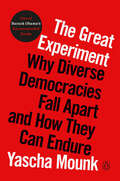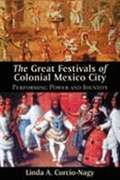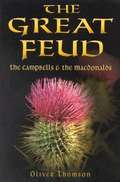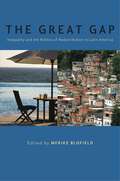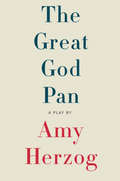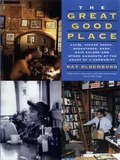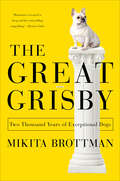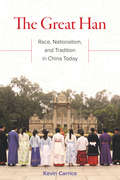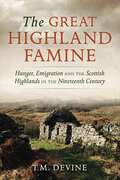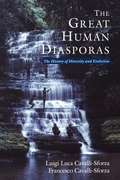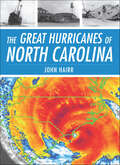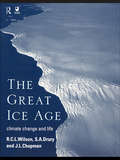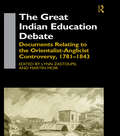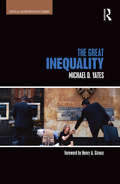- Table View
- List View
The Great Disruptor: Trump, the Media, and the Politics of Degradation
by Lars Koch Tobias Nanz Christina RogersThe January 6 attack on the U.S. Capitol was the peak of Donald Trump&’s populist strategy during his first term. His goal was to gain support through confrontation and by portraying others as enemies. This book examines Trump&’s public image from a culture and media studies perspective. It explores how his political style during his rise to the presidency was shaped by social conflicts, how he escalated these tensions, and how he benefited from polarization. The contributions focus on Trump&’s first term, highlighting how his rhetoric during the Black Lives Matter movement and the COVD-19 crisis, as well as his promotion of conspiracy theories and attacks on political institutions, pushed American society to the brink of civil war. They discuss Trump&’s use of media and his politics of emotion, framing him as the &“Great Disruptor&” in the context of popular culture, fragmented public discourse, and aggressive rhetoric.
The Great Disruptor: Über Trump, die Medien und die Politik der Herabsetzung
by Lars Koch Tobias Nanz Christina RogersDieser Open Access-Band untersucht aus kultur- und medienwissenschaftlicher Perspektive das öffentliche Auftreten von Donald Trump und nimmt dabei insbesondere in den Blick, wie der US-amerikanische Präsident an der gesellschaftlichen Konfrontation unterschiedlicher politischer Gruppen partizipiert und diese kommunikativ weiter forciert. Diskutiert werden Trumps Mediengebrauch, seine Adressierungsstrategien und seine Politik der Affekte. Die Beiträge des Bandes rücken den „great disruptor“ in ein Spannungsfeld von Populärkultur, fragmentierter Öffentlichkeit und rhetorischer Feindsetzung.
The Great Disruptor: Über Trump, die Medien und die Politik der Herabsetzung
by Lars Koch Tobias Nanz Christina RogersDer Sturm auf das Kapitol bildet den Höhepunkt einer populistischen Konfrontations- und Mobilisierungsstrategie, die darauf ausgelegt war, Zustimmung durch eine Politik der Herab- und Feindsetzung zu akkumulieren. In der aktualisierten, 2. Auflage geht es weiterhin darum, aus kultur- und medienwissenschaftlicher Perspektive das öffentliche Auftreten von Donald Trump zu untersuchen und zu zeigen, wie der 45. US-Präsident an der gesellschaftlichen Konfrontation unterschiedlicher politischer Gruppen partizipierte, diese kommunikativ weiter eskalierte und von der sich immer radikaler gestaltenden Polarisierung politisch zu profitieren hoffte. Allerdings weitet sich der Untersuchungsfokus und nimmt nunmehr auch die beiden letzten Jahre seiner Amtszeit mit in den Blick, in denen Trump durch immer schrillere Töne im Kontext von Black Live Matters und der Corona-Krise, durch die Anheizung von Verschwörungstheorien und durch radikale Diskreditierung von politischen Verfahren und Institutionen die US-amerikanische Gesellschaft bis an den Rand eines Bürgerkriegs getrieben hat. Diskutiert werden Trumps Mediengebrauch, seine mit Herabsetzungen, Beleidigungen und Unterstellungen arbeitenden Adressierungsstrategien und seine Politik der Affekte. Die Beiträge des Bandes rücken den „great disruptor“ in ein Spannungsfeld von Populärkultur, fragmentierter Öffentlichkeit und rhetorischer Feindsetzung.
The Great Divide: Nature and Human Nature in the Old World and the New
by Peter WatsonIn The Great Divide, acclaimed author and historian Peter Watson explores the development of humankind between the Old World and the New, and offers a groundbreaking new understanding of human history.By 15,000 BC, humans had migrated from northeastern Asia across the frozen Bering land bridge to the Americas. When the last Ice Agecame to an end, the Bering Strait refilled with water, dividing America from Eurasia. This division continued until Christopher Columbus voyaged to the New World in the fifteenth century.The Great Divide compares the development of humankind in the Old World and the New between 15,000 BC and AD 1,500. Combining the most up-to-date knowledge in archaeology, anthropology, geology, meteorology, cosmology, and mythology, Peter Watson’s masterful study offers uniquely revealing insight into what it means to be human.
The Great Earthquake Experiment: Risk Communication And Public Action
by Dennis Mileti Colleen FitzpatrickThis book portrays the history, causes and future of large earthquakes in the US and traces the evolution of government policy to deal with it. It reviews the range of human actions that can be taken to manage or lessen quake losses and presents a review of the current technology to predict quakes.
The Great East Japan Earthquake Disaster and Population Changes: A population geography of the Tohoku Region, Japan (SpringerBriefs in Population Studies)
by Takashi AbeThe book aims to clarify from a demographic and geographical perspective how population trends of the Tohoku Region were changed as a result of the GEJED. The author shows how different the 2011 GEJED was from past disasters in this region with regard to the impacts on population change in the Tohoku Region. He explains how the recent disaster is different from past disasters, based on the theories of the first and second demographic transitions. He also clarifies the causality between the extent of housing damage and mortality through geographical analysis. Furthermore, this book shows how migration patterns were changed before and after the GEJED, and it identifies the differences between the areas affected by the tsunami and by the nuclear power plant accident.Investigating the GEJED as a case study, the book presents a method to analyze the relationship between natural disasters and population change. This book is especially useful for researchers inthe fields of disaster, environment, and population to better understand the relationship between the environment and population.
The Great East Japan Earthquake and Its Impact on German Firms
by Ralf BebenrothThis publication sheds light on how Japan-based German firms dealt with the impact of the Great East Japan Earthquake that occurred in March 2011. To gather data, a questionnaire was developed and sent out in April 2012 to 244 German subsidiaries based in the Kanto area, mainly in Tokyo, with replies received from the top managers of 84 firms. In addition, the author conducted follow-up interviews with top managers of 14 of those firms in Tokyo to illuminate interesting aspects of the responses given in the questionnaires. It is shown that the overall impact on the performance of German firms was comparatively low. Those firms have now returned to normal operation and face relatively few disaster-related problems. However, firms with higher autonomy more frequently moved their offices either to the Kansai area, including Osaka, Kobe and Kyoto, or at least temporarily closed down. In retrospect, the interviews made clear that relocating or suspending operations was a costly mistake. In contrast to transaction cost theory, which states that subsidiaries should be given high autonomy in such cases of emergency, it would have been better for the headquarters offices to have communicated more intensively with the management of their subsidiaries.
The Great Exception
by Jefferson CowieThe New Deal: where does it fit in the big picture of American history? What does it mean for us today? What happened to the economic equality it once engendered? In The Great Exception, Jefferson Cowie provides new answers to these big questions. Beginning in the Great Depression and through to the 1970s, he argues, the United States built a uniquely equitable period that contrasts with the deeper historical patterns of American political practice, economic structure, and cultural outlook. During those exceptional decades, which Cowie situates in the long arc of American history, the government used its considerable resources on behalf of working Americans in ways that it had not before and has not since. The crises of the Depression and World War II forced realignments of American politics and class relations, but these changes were less a permanent triumph of the welfare state than the product of a temporary cessation of enduring tensions involving race, immigration, culture, class, and individualism. Against this backdrop, Cowie shows how any renewed American battle for collective economic rights needs to build on an understanding of how the New Deal was won--and how it ultimately succumbed to contrasting patterns ingrained in U.S. history. As positive as the era of Roosevelt was in creating a more equitable society, Cowie suggests that the New Deal may necessarily belong more to the past than the future of American politics. Anyone who wants to come to terms with the politics of inequality in U.S. history will need to read The Great Exception. Some images inside the book are unavailable due to digital copyright restrictions.
The Great Experiment: Why Diverse Democracies Fall Apart and How They Can Endure
by Yascha MounkFrom one of our sharpest and most important political thinkers, a brilliant big-picture vision of the greatest challenge of our time—how to bridge the bitter divides within diverse democracies enough for them to remain stable and functionalSome democracies are highly homogeneous. Others have long maintained a brutal racial or religious hierarchy, with some groups dominating and exploiting others. Never in history has a democracy succeeded in being both diverse and equal, treating members of many different ethnic or religious groups fairly. And yet achieving that goal is now central to the democratic project in countries around the world. It is, Yascha Mounk argues, the greatest experiment of our time. Drawing on history, social psychology, and comparative politics, Mounk examines how diverse societies have long suffered from the ills of domination, fragmentation, or structured anarchy. So it is hardly surprising that most people are now deeply pessimistic that different groups might be able to integrate in harmony, celebrating their differences without essentializing them. But Mounk shows us that the past can offer crucial insights for how to do better in the future. There is real reason for hope. It is up to us and the institutions we build whether different groups will come to see each other as enemies or friends, as strangers or compatriots. To make diverse democracies endure, and even thrive, we need to create a world in which our ascriptive identities come to matter less—not because we ignore the injustices that still characterize the United States and so many other countries around the world, but because we have succeeded in addressing them. The Great Experiment is that rare book that offers both a profound understanding of an urgent problem and genuine hope for our human capacity to solve it. As Mounk contends, giving up on the prospects of building fair and thriving diverse democracies is simply not an option—and that is why we must strive to realize a more ambitious vision for the future of our societies.
The Great Festivals of Colonial Mexico City: Performing Power and Identity (Dialogos Series)
by Linda A. Curcio-NagyThe pervasiveness of festivals and the power of the political message associated with them created possibilities for individuals to assess and participate in a larger discussion of good governance in the colony.
The Great Feud: The Campbells & the MacDonalds
by Oliver ThomsonA vivid account of the remarkable rivalry, sometimes bloody conflict, between 2 great families who originated on the west coast of Scotland, a feud that lasted 450 years.
The Great Flood Of 1993: Causes, Impacts, And Responses
by Stanley ChangnonThe flood that affected a third of the United States during the summer of 1993 was the nation's worst, ranking as a once-in-300-years event. It severely tested national, state, and local systems for managing natural resources and for handling emergencies, illuminating both the strengths and weaknesses in existing methods of preparing for and dealing with massive prolonged flooding. Through detailed case studies, this volume diagnoses the social and economic impacts of the disaster, assessing how resource managers, flood forecasters, public institutions, the private sector, and millions of volunteers responded to it. The first comprehensive evaluation of the 1993 flood, this book examines the way in which floods are forecast and monitored, the effectiveness of existing recovery processes, and how the nation manages its floodplains. The volume concludes with recommendations for the future, in hope of better preparing the country for the next flood or other comparable disaster.
The Great Gap: Inequality and the Politics of Redistribution in Latin America
by Edited by Merike BlofieldThe relationship between socioeconomic inequality and democratic politics has been one of the central questions in the social sciences from Aristotle on. Recent waves of democratization, combined with deepened global inequalities, have made understanding this relationship ever more crucial. In The Great Gap, Merike Blofield seeks to contribute to this understanding by analyzing inequality and politics in the region with the highest socioeconomic inequalities in the world: Latin America. The chapters, written by prominent scholars in their fields, address the socioeconomic context and inequality of opportunities; elite culture, public opinion, and media framing; capital mobility, campaign financing, representation, and gender equality policies; and taxation and social policies.Aside from the editor, the contributors are Pablo Alegre, Maurício Bugarin, Daniela Campello, Anna Crespo, Francisco H. G. Ferreira, Fernando Filgueira, Liesl Haas, Sallie Hughes, Juan Pablo Luna, James E. Mahon Jr., Juliana Martínez Franzoni, Adriana Cuoco Portugal, Paola Prado, Elisa P. Reis, Luis Reygadas, Sergio Naruhiko Sakurai, and Koen Voorend.
The Great Gap: Inequality and the Politics of Redistribution in Latin America
by Merike BlofieldThe relationship between socioeconomic inequality and democratic politics has been one of the central questions in the social sciences from Aristotle on. Recent waves of democratization, combined with deepened global inequalities, have made understanding this relationship ever more crucial. In The Great Gap, Merike Blofield seeks to contribute to this understanding by analyzing inequality and politics in the region with the highest socioeconomic inequalities in the world: Latin America. The chapters, written by prominent scholars in their fields, address the socioeconomic context and inequality of opportunities; elite culture, public opinion, and media framing; capital mobility, campaign financing, representation, and gender equality policies; and taxation and social policies.Aside from the editor, the contributors are Pablo Alegre, Maurício Bugarin, Daniela Campello, Anna Crespo, Francisco H. G. Ferreira, Fernando Filgueira, Liesl Haas, Sallie Hughes, Juan Pablo Luna, James E. Mahon Jr., Juliana Martínez Franzoni, Adriana Cuoco Portugal, Paola Prado, Elisa P. Reis, Luis Reygadas, Sergio Naruhiko Sakurai, and Koen Voorend.
The Great God Pan
by Amy Herzog"The Great God Pan is a haunting, deeply affecting play about the interaction of identity, psychology and pathology. Ms. Herzog writes with keen sensitivity to the complex weave of feelings embedded in all human relationships, with particular attention to the way we tiptoe around areas of radioactive emotion." - New York Times"Whatever the ideal contemporary American drama is, it has to look a lot like The Great God Pan. It is provocative and subtle, slowly, carefully revelatory, sweetly moving, thought-provoking, funny and insightful." - New York Observer"An intelligent, delicately articulate writer." - Village Voice"A moving and unsettling look at the nature of identity and the vagaries of memory. With subtlety and compassion, Herzog contemplates how well we can really know ourselves." - BackstageJamie's life in Brooklyn seems just fine: a beautiful girlfriend, a burgeoning journalism career, and parents who live just far enough away. But when a possible childhood trauma comes to light, lives are thrown into a tailspin. Unsettling and deeply compassionate, The Great God Pan tells the intimate tale of what is lost and won when a hidden truth is suddenly revealed.Amy Herzog's plays include 4000 Miles (Pulitzer Prize finalist), After the Revolution and Belleville. Ms. Herzog is the recipient of numerous awards, including the Whiting Writers' Award, an Obie Award and the Helen Merrill Award for Aspiring Playwrights.
The Great Good Place: Cafes, Coffee Shops, Bookstores, Bars, Hair Salons, and Other Hangouts at the Heart of a Community
by Ray OldenburgThe Great Good Place argues that third places - where people can gather, put aside the concerns of work and home, and hang out simply for the pleasures of good company and lively conversation - are the heart of a community's social vitality and the grassroots of democracy.
The Great Grisby: Two Thousand Years of Exceptional Dogs
by Mikita BrottmanA scholar, psychoanalyst, and cultural critic explores the multifaceted role dogs play in our world in this charming bestiary of dogs from literature, lore, and life.While gradually unveiling her eight-year love affair with her French bulldog, Grisby, Mikita Brottman ruminates on the singular bond between dogs and humans. Why do prevailing attitudes warn us against loving our pet “too much”? Is her relationship with Grisby nourishing or dysfunctional, commonplace or unique? Challenging the assumption that there’s something repressed and neurotic about those deeply connected to a dog, she turns her keen eye on the many ways in which dog is the mirror of man.The Great Grisby is organized into twenty-six alphabetically arranged chapters, each devoted to a particular human-canine union drawn from history, art, philosophy, or literature. Here is Picasso’s dachshund Lump; Freud’s chow Yofi; Bill Sikes’s mutt Bull’s Eye in Oliver Twist; and Elizabeth Barrett Browning’s spaniel Flush, whose biography was penned by Virginia Woolf. There are royal dogs, like Prince Albert’s greyhound Eos, and dogs cherished by authors, like Thomas Hardy’s fox terrier, Wessex. Brottman’s own beloved Grisby serves as an envoy for sniffing out these remarkable companions.Quirky and delightful, and peppered with incisive personal reflections and black-and-white sketches portraying a different dog and its owner drawn by the enormously talented Davina “Psamophis” Falcão, The Great Grisby reveals how much dogs have to teach us about empathy, happiness, love—and what it means to be human.
The Great Han: Race, Nationalism, and Tradition in China Today
by Kevin CarricoThe Great Han is an ethnographic study of the Han Clothing Movement, a neotraditionalist and racial nationalist movement that has emerged in China since 2001. Participants come together both online and in person in cities across China to revitalize their utopian vision of the authentic “Great Han” and corresponding “real China” through pseudotraditional ethnic dress, reinvented Confucian ritual, and anti-foreign sentiment. Analyzing the movement’s ideas and practices, this book argues that the vision of a pure, perfectly ordered, ethnically homogeneous, and secure society is in fact a fantasy constructed in response to the challenging realities of the present. Yet this national imaginary is reproduced precisely through its own perpetual elusiveness. The Great Han is a pioneering analysis of Han identity, nationalism, and social movements in a rapidly changing China.
The Great Highland Famine: Hunger, Emigration and the Scottish Highlands in the Nineteenth Century
by Tom M. DevineThe Great Hunger in nineteenth-century Ireland was a major human tragedy of modern times. Almost a million perished and a further two million emigrated in the wake of potato blight and economic collapse. Acute famine also gripped the Scottish Highlands at the same time, causing misery, hardship and distress. The story of that lesser known human disaster is told in this prize-winning and internationally acclaimed book. The author describes the classic themes of highland and Scottish history, including the clearances, landlordism, crofting life, emigration and migration in a subtle and intricate reconstruction based on a wide range of sources. This book should appeal to all those with an interest in Scottish history, the emigration of Scottish people and the Highland Clearances.
The Great Human Diasporas: The History of Diversity and Evolution
by Luigi Luca Cavalli-Sforza Francesco Cavalli-SforzaLuigi Luca Cavalli-Sforza draws upon his lifelong work in archaeology, anthropology, genetics, molecular biology, and linguistics, to address the basic questions of human origins and diversity. Coauthored by his son, Francesco, the book answers age-old questions such as: Was there a mitochondrial Eve? Did the first humans originate in Africa or in several spots on the planet at about the same time? How did humans get onto North America, the tip of South America, and Australia?
The Great Hurricanes of North Carolina (Disaster)
by John HairrFrom the horrific Independence Hurricane of 1775, the most lethal storm to strike its coast, to the ruinous Hugo in September 1989, a path has been cut along the shores of the Tarheel State-a path not easily forgotten. Engagingly written and illustrated with historical photos that graphically depict the disastrous effects of these mighty storms, this book is a gripping read!
The Great Ice Age: Climate Change and Life
by J.A. Chapman S.A. all Drury R.C.L. WilsonThe Great Ice Age documents and explains the natural climatic and palaeoecologic changes that have occurred during the past 2.6 million years, outlining the emergence and global impact of our species during this period. Exploring a wide range of records of climate change, the authors demonstrate the interconnectivity of the components of the Earths climate system, show how the evidence for such change is obtained, and explain some of the problems in collecting and dating proxy climate data.One of the most dramatic aspects of humanity's rise is that it coincided with the beginnings of major environmental changes and a mass extinction that has the pace, and maybe magnitude, of those in the far-off past that stemmed from climate, geological and occasionally extraterrestrial events. This book reveals that anthropogenic effects on the world are not merely modern matters but date back perhaps a million years or more.
The Great Indian Education Debate: Documents Relating to the Orientalist-Anglicist Controversy, 1781-1843
by Lynn Zastoupil Martin MoirA bitter debate erupted in 1834 between Orientalists and Anglicists over what kind of public education the British should promote in their growing Indian empire. This collection of the main documents pertaining to the controversy (some published for the first time) aims to recover the major British and South Asian voices, broaden our understanding of imperial discourses and recognise the significant role of the colonised in the shaping of colonial knowledge. Bringing together into a single volume documents not easily obtained - long out of print, never before published, or scattered about in sundry books and journals - enables modern readers to judge the relative merits of the various arguments and undermines the common impression that the controversy was simply an exercise in colonial power involving only Europeans.
The Great Inequality (Critical Interventions)
by Michael D YatesA growing inequality in income and wealth marks modern capitalism, and it negatively affects nearly every aspect of our lives, especially those of the working class. It is and will continue to be the central issue of politics in almost every nation on earth. In this book, the author explains inequality in clear, passionate, and intelligent prose: what it is, why it matters, how it affects us, what its underlying causes are, and what we might do about it. This book was written to encourage informed radical action by working people, the unemployed, and the poor, uniquely blending the author’s own experiences with his ability to make complex issues comprehensible to a mass audience. This book will be excellent for courses in a variety of disciplines, and it will be useful to activists and the general reading public.
